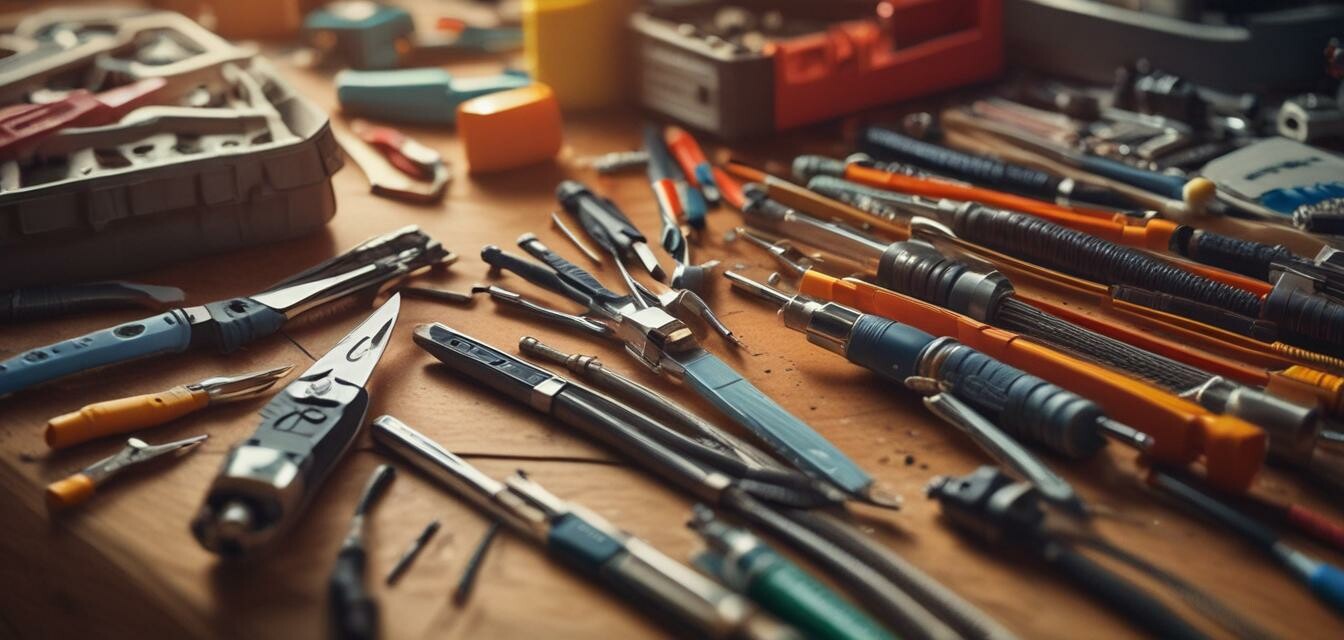
How to Maintain Your Electrical Tools
Key Takeaways
- Regular cleaning and lubrication enhance tool lifespan.
- Calibration ensures precise measurements and performance.
- Proper storage prevents damage and reduces wear.
- Knowledge of different tools aids in maintaining them effectively.
Maintaining your electrical tools is essential for maximizing their lifespan and performance. Regular care not only keeps your tools in great working condition but also ensures safety while using them. In this guide, we will explore effective cleaning, calibration, and storage techniques for your electrical tools.
Why Maintenance is Important
Electrical tools are a significant investment in any electrician's or DIY enthusiast's toolkit. Proper maintenance can save you money in the long run, enhance the performance of your tools, and even ensure safety while you work.
Benefits of Proper Maintenance
- Prolongs the lifespan of your tools.
- Maintains optimal performance.
- Prevents costly repairs and replacements.
- Ensures safety while using tools.
Cleaning Your Electrical Tools
Cleaning is the first step in maintaining any tool. It helps remove dirt, dust, and grime that can cause wear and tear.
Cleaning Steps
- Disconnect the tool from power sources.
- Use a soft brush to remove dirt and debris.
- Wipe surfaces with a damp cloth.
- Use compressed air to clean hard-to-reach areas.
- Dry tools thoroughly to prevent rust.
Calibration of Electrical Tools
Calibration is essential for tools that provide measurements. Regular calibration ensures accuracy and reliability.
How to Calibrate Your Tools
- Refer to the manufacturer's guidelines for calibration procedures.
- Use standard reference materials for accuracy.
- Make adjustments as needed to ensure precision.
- Document calibration dates for future reference.
Storage Tips for Electrical Tools
Proper storage is key to preventing damage to your tools. Here are some effective storage solutions:
| Storage Method | Description |
|---|---|
| Toolboxes | Keep tools organized and easily accessible. |
| Wall-mounted racks | Free up workbench space and avoid clutter. |
| Climate-controlled storage | Protect tools from extreme temperatures and humidity. |
| Magnetic strips | Great for storing metal tools securely and visibly. |
Additional Maintenance Tips
To get the most out of your electric tools, consider these additional maintenance tips:
Beginner Tips
- Read manuals to understand specific maintenance requirements for each tool.
- Keep a maintenance log to track cleaning and calibration dates.
- Invest in protective gear when maintaining tools.
Conclusion
Maintaining your electrical tools requires diligence but pays off in durability, efficiency, and safety. By regularly cleaning, calibrating, and properly storing your tools, you'll ensure that they remain reliable and functional for years to come.
Pros
- Enhances tool longevity.
- Improves accuracy and safety.
- Reduces repair costs over time.
Cons
- Requires time and effort.
- May require specific cleaning and calibration tools.
For more tips, check out our Buying Guides to help you choose the best tools for your needs. Also, explore our sections on Tools & Accessory Kits and Safety Equipment for more insights into electrician supplies.